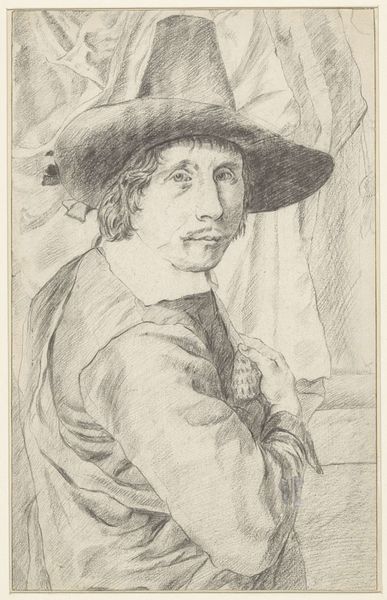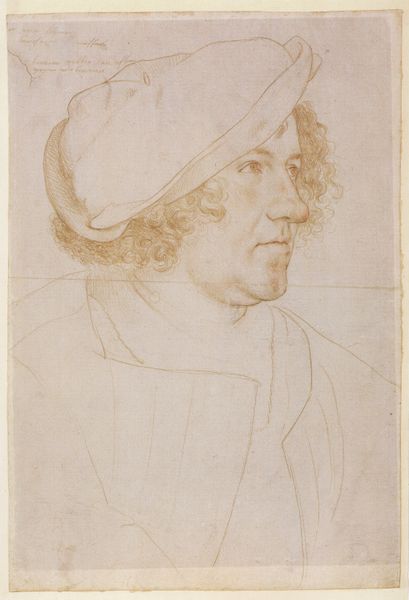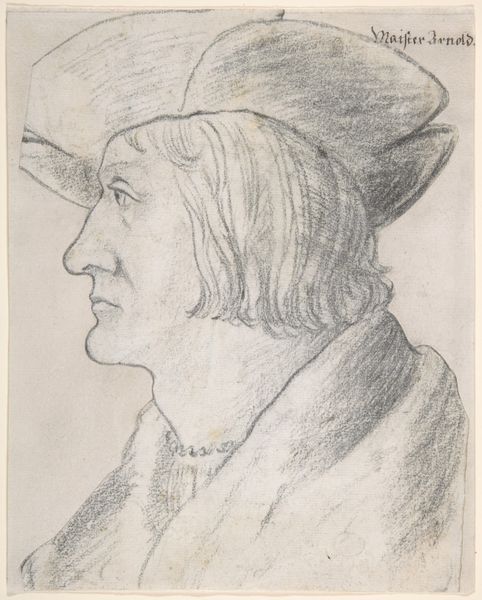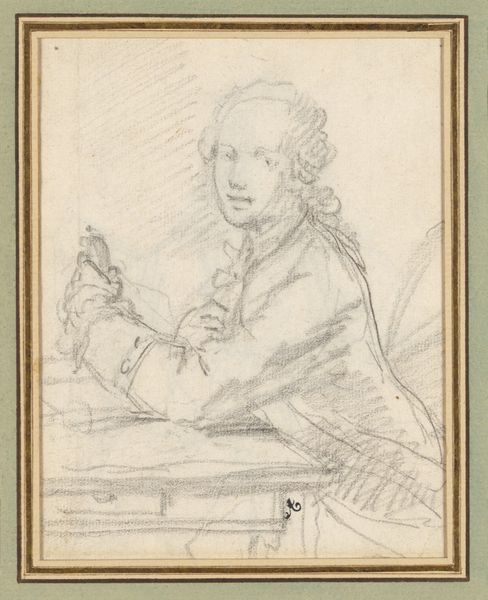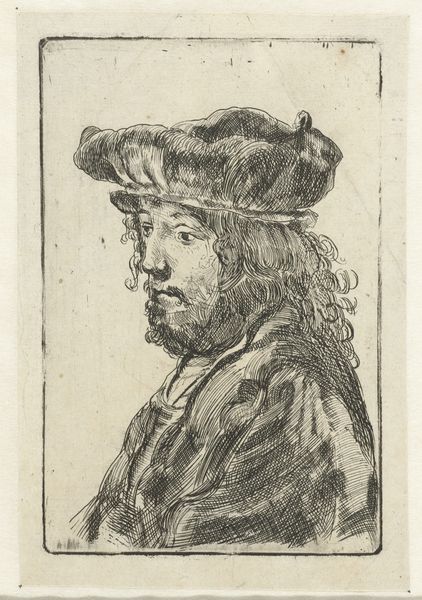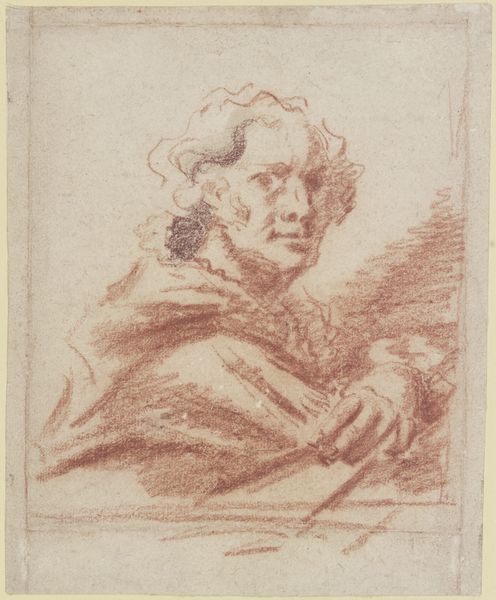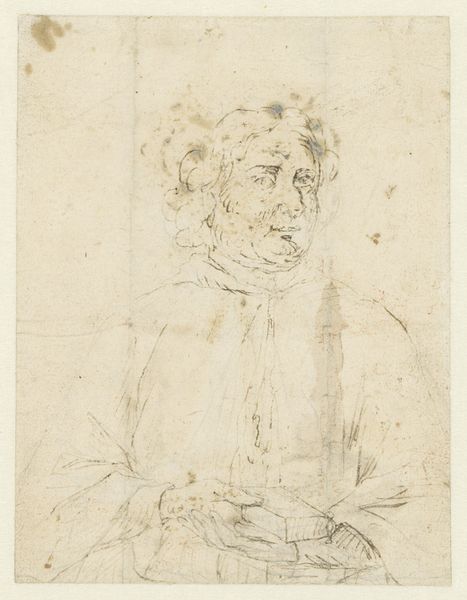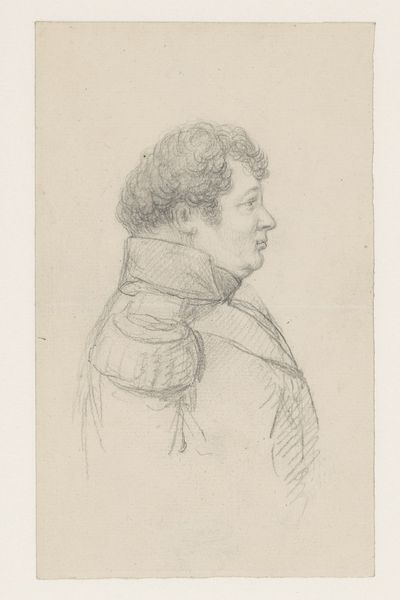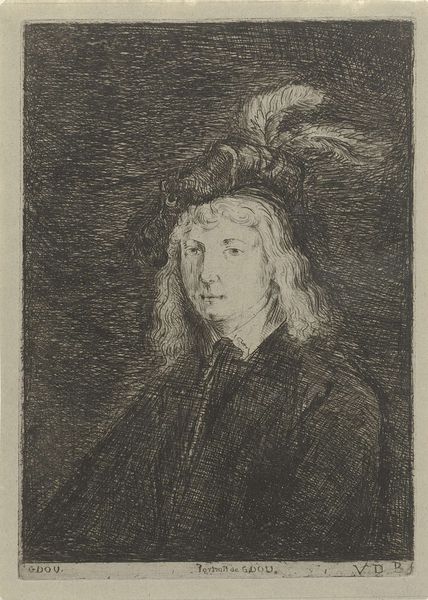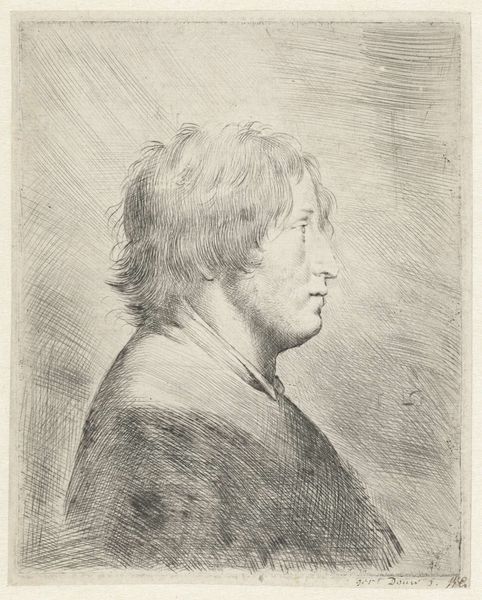
Copyright: Public Domain
Editor: Here we have "Portrait of a Benefactor," a pen and ink drawing on paper from 1530, by Matthys van den Bergh. It’s quite striking; the sitter seems very present, yet the loose linework lends it a sort of impermanence. What do you see in this piece? Curator: Beyond the apparent realism of Renaissance portraiture, I see a carefully constructed assertion of social and political identity. Look at the details: the sitter’s clothing, his confident gaze, the scroll he holds, perhaps signifying his engagement with humanist thought, all meticulously rendered using pen and ink. How might this portrait serve to solidify his position within the socio-political hierarchy of the time? Editor: So, you are suggesting it’s not just a likeness, but a statement? I was drawn to the detail in his face. The expression seems very... knowing. Curator: Precisely. These portraits, particularly those of benefactors, were powerful tools for shaping perception and reinforcing existing power dynamics. Van den Bergh isn't simply recording a likeness; he's actively constructing an image designed to communicate the sitter's authority and intellectual merit. Consider the setting - seemingly domestic, but equally deliberate in creating the overall effect. Does that change how you view the work? Editor: It does, yes! I initially read the drawing as a personal reflection, but framing it within those power dynamics reveals the complexities of portraiture at the time. It also reminds me to think more critically about who has the privilege to be represented. Curator: Indeed. And whose stories get told, and how. This work offers a lens into the ways identity and power were negotiated in the 16th century, issues still relevant today. Editor: I’ll definitely look at Renaissance portraiture differently now. Thank you.
Comments
No comments
Be the first to comment and join the conversation on the ultimate creative platform.

